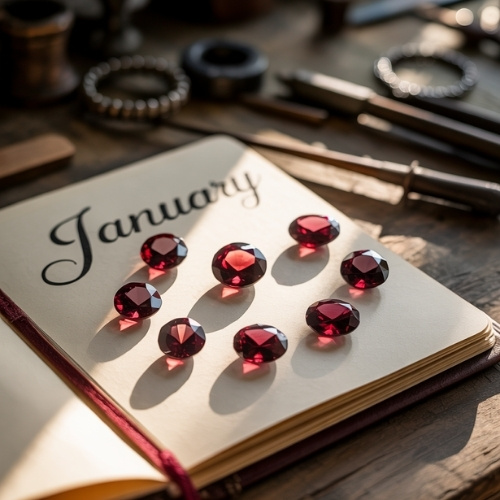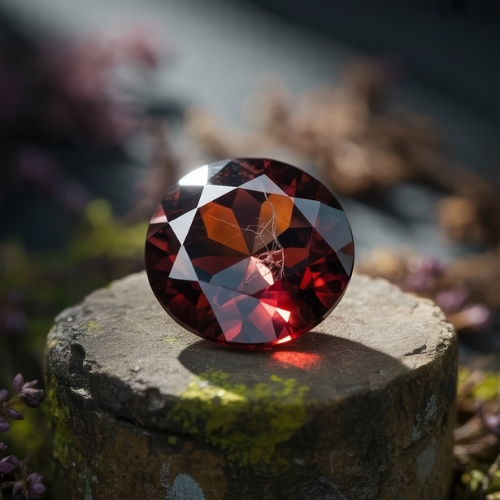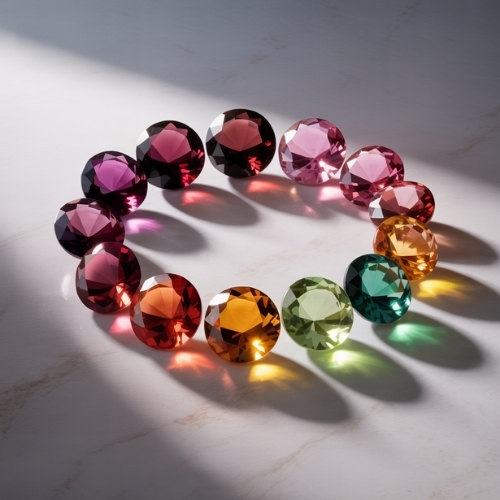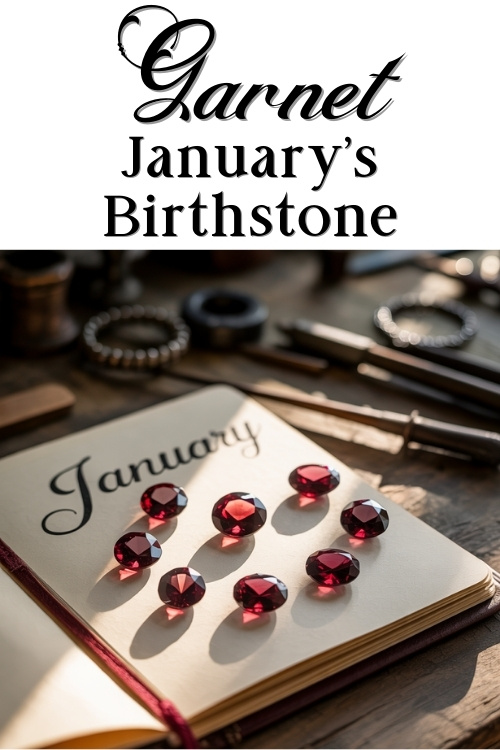Estimated reading time: 5 minutes
January is a month of fresh beginnings, crisp winter skies, and the warm, radiant glow of garnet. Officially recognised as the birthstone for January, garnet has been cherished for thousands of years for its deep reds, stunning brilliance, and rich history. While some modern lists also include rose quartz or onyx, garnet remains the true star of the month, celebrated by jewellers and gemstone enthusiasts alike.
Jump to:
Why Garnet is January’s Birthstone
Garnet has been associated with January for centuries. With its deep red colour representing warmth, vitality, and courage, it is a perfect match for the cold, reflective days of the month.
The stone was also featured on the legendary Breastplate of Aaron, where it served as a symbol of protection. Over time, garnet became linked with safeguarding travellers, inspiring confidence, and strengthening loyalty, making it a gem that can be seen to celebrate both personal milestones and the exciting fresh start a new year brings.
Garnet was officially added to the modern birthstone list in 1912, cementing its place in contemporary jewellery traditions. Today, wearing or gifting garnet in January is much more than a decorative choice; it carries centuries of meaning, connecting the present to a rich history of protection, passion, and enduring relationships.
🔗 Explore the History of Birthstones to learn more about this timeless tradition
History and Lore of Garnets
The story of garnet stretches back more than 5,000 years. Archaeologists have discovered garnet beads, amulets, and jewellery from Mesopotamia and Egypt dating as far back as 3,000 BCE. Back then, garnets were prized as protective talismans. Warriors wore them into battle, and travellers kept them close to ensure safe journeys.
In Europe and Asia, garnet was believed to light up the night. Its deep red glow was thought to mimic embers, giving warmth through the coldest winters. By the Middle Ages, garnet had become a symbol of loyalty and truth, often given as a token of affection. Today, garnet’s rich history adds depth to its beauty and makes it a captivating stone to study, wear, and collect.
🔗Dive deeper into Garnet Myths and Legends
Meaning, Symbolism, and Energy
Garnet has long been valued for its energising and stabilising qualities. Its deep red tones are often associated with courage, devotion, and vitality, making it a gemstone that inspires confidence and determination. Across cultures, garnet has symbolised loyalty, truth, and the drive to take bold steps, connecting wearers with a sense of purpose and resilience.
In crystal and gemstone practices, garnet is believed to stimulate creativity, enhance focus, and support emotional balance. Whether set in jewellery, kept in a workspace, or included in a collection, it is thought to encourage commitment, spark motivation, and foster meaningful connections.
🔗Discover the Symbolic and Spiritual Meanings of Garnet Crystals
Varieties, Colours, and Buying Tips
Most people imagine garnet as a deep crimson stone, but it actually belongs to a family of gemstones that appears in a wide range of colours. The bright green Tsavorite, fiery orange Spessartine, and soft pink Rhodolite are all part of the same family. There are even rare colourless and colour-changing varieties, making garnet a truly fascinating gemstone.
When buying garnet, colour and clarity are the key factors to consider. Stones with vivid saturation and even tones are the most desirable, while transparency adds value. Especially since eye clean garnets are quite rare. Most garnets are untreated, but some may undergo gentle heating to enhance colour, so it is always worth asking about treatment before purchasing.
Caring for garnet is straightforward. Avoid harsh chemicals and prolonged sunlight, which can fade some varieties. A gentle wash with warm soapy water and a soft brush is usually enough to keep garnets sparkling for years.
🔗 Working with garnet gemstones? Have a read of my Jewellers Guide to Garnet
Fun Facts About Garnet
- Garnets can grow into enormous crystals. In some parts of the world, garnets form crystals up to a metre in size, a reminder of the natural wonder behind each gemstone.
- Garnets can be almost any colour. From vivid greens and fiery oranges to delicate pinks, rare blues, and even colourless stones.
- Some garnets glow under ultraviolet light. Certain green and pink varieties can emit red or orange flashes, adding a magical surprise for gemstone enthusiasts.
Modern Alternatives for January
Although garnet is the official January birthstone, some modern lists include rose quartz and onyx.
Rose Quartz, with its gentle pink hue, represents love and compassion, making it a popular choice for self-care jewellery.
Onyx, with its bold black tones, is valued for its protective and grounding energy.
Both are beautiful stones, but garnet, with the versatility its range of colours offer, remains the heart of January’s gemstone story.
Garnet’s Enduring Place in January Birthstone Lore
Garnet shines as a gemstone of passion, vitality, and protection. Its rich history, stunning range of colours, and symbolic energy make it a perfect companion for January birthdays and new beginnings. Whether you are a collector, jeweller, or someone who simply loves gemstones, garnet offers beauty, meaning, and inspiration in every facet.
🛍️ Looking for a sustainable garnet for your next design? Browse our pre-owned garnets here
📌 Save this post so you can revisit Garnet, January’s Birthstone, whenever you need inspiration.




